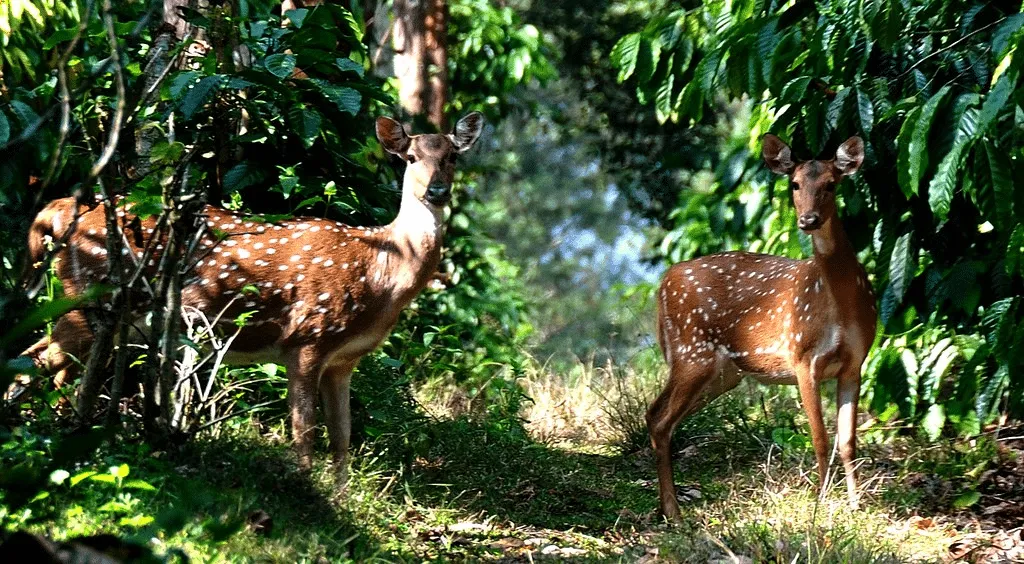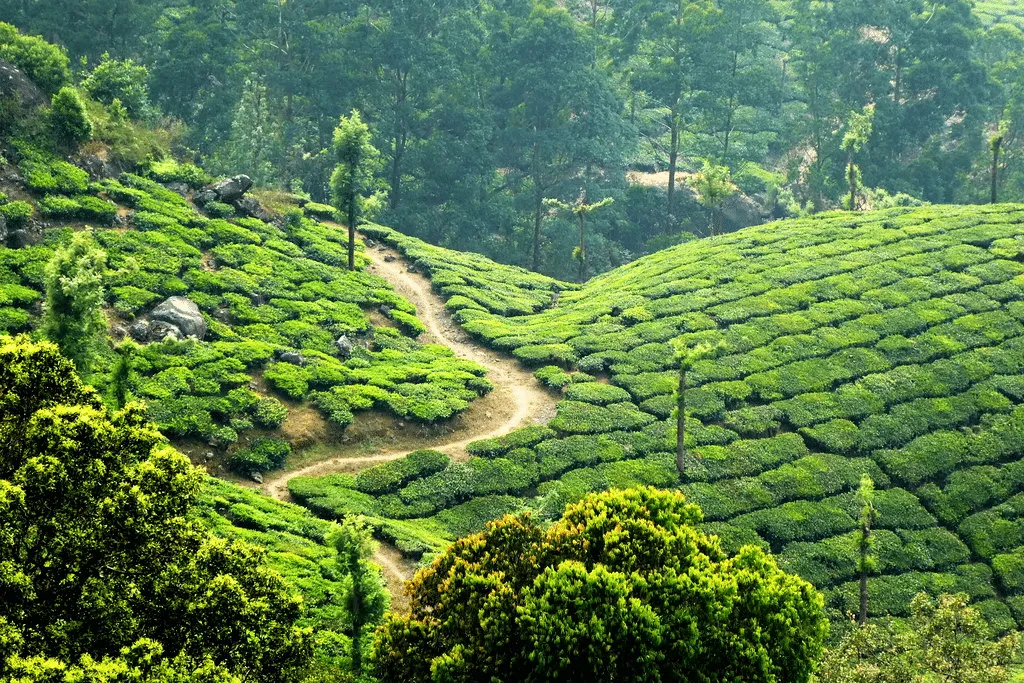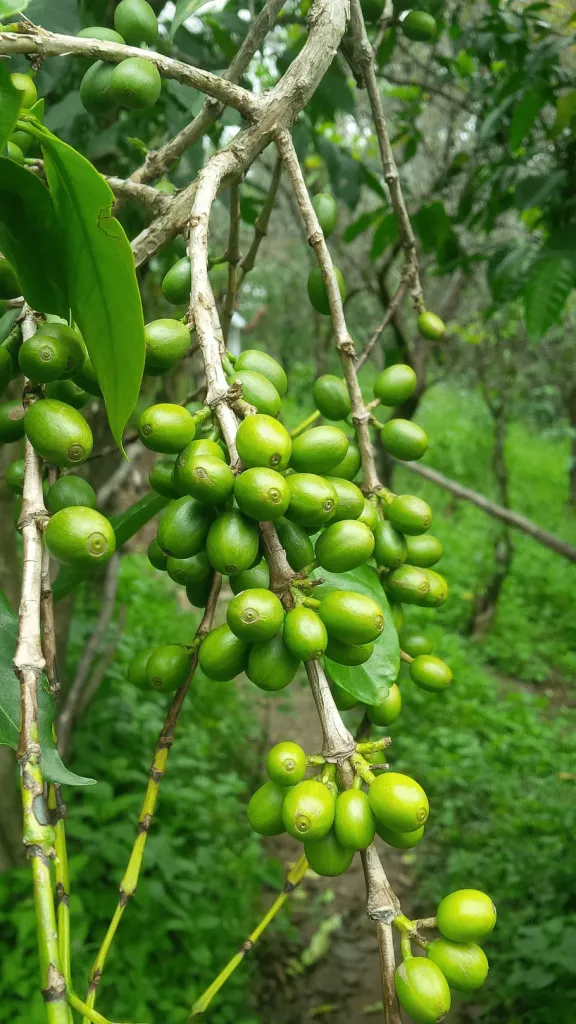Kerala, the lush southwestern state of India, is also famous for its picturesque landscapes and vibrant coffee industry. However, coffee farmers in the region face unprecedented challenges due to the adverse effects of climate change.
Impact of climate change on coffee
The impact of climate change on coffee farmers is also evident in Wayanad, a hilly district in Kerala. Augustine Vadakil, a struggling farmer, recalls how the region has been transformed from a cold and misty place to one with significantly higher temperatures. Over the years, the number of warmer days has more than doubled, with temperatures exceeding 30 degrees Celsius in early March, negatively affecting crops such as peppers and oranges, which are sensitive to heat.
Wayanad has a rich history of growing coffee, with its fertile hills once teeming with lush plantations. However, coffee farmers in the district now face a rapidly changing climate. Rising temperatures have transformed the region’s cool and misty environment into a hotter and more unpredictable one.
The number of warmer days has doubled, having adverse effects on sensitive crops such as coffee, pepper and oranges. The once-reliable monsoon season has turned erratic, leading to prolonged droughts or heavy rains, further exacerbating the challenges for coffee farmers.

Wayanad coffee farmers are experiencing a number of difficulties directly related to climate change. Higher temperatures have become conducive to the proliferation of pests and diseases, such as coffee rust and quick wilt. These devastating diseases damage coffee plants, affecting their yield and quality.
Erratic rainfall patterns disrupt traditional farming practices, making it increasingly difficult for farmers to predict optimal planting and harvest times. In turn, this uncertainty affects the overall productivity of coffee crops.
India ranks third in Asia for coffee production
The agricultural sector is highly dependent on weather conditions, making it susceptible to the impacts of climate change. Climate change encompasses long-term changes in weather patterns caused by natural variability and human activities that alter the composition of the global atmosphere.
The coffee industry is particularly affected, as it is the world’s second-largest trade commodity, after oil, and a major source of foreign exchange for many tropical nations.
India ranks third in Asia for coffee production and export, with a concentration of coffee plantations in the southern states of Karnataka, Kerala and Tamil Nadu, specifically within the Nilgiris region.
Known for its trade-dependent plantation crops, Kerala is home to a sizeable number of smallholder coffee farmers who play a significant role in both the number of operating farms and overall production. Small and marginal planters, along with plantation workers, are highly dependent on coffee cultivation as a labour-intensive production system and a primary source of income.
In the Final Triennium (TE) 2017-18, Kerala accounted for 19.2% of the coffee production area and 20.3% of production in India. The significant increase in coffee production from 18,893 MT in 1950-51 to 3,16,000 MT in 2017-18 can be attributed to a five-fold expansion in cultivation area from 92,523 ha to 4,54,722 ha and an increase of four times in productivity during the same period.
However, climate change has brought challenges to coffee production in India, with reduced rainfall and increased temperatures in coffee-growing regions negatively affecting production and productivity. The present study focuses on identifying the climatic factors that influence coffee production in Kerala and the general implications for the coffee production system.
Comparing Climate Parameters: Idukki vs Wayanad
In Idukki, the average maximum temperature is 27.08 °C, compared to 28.22 °C in Wayanad. The average minimum temperature is 14.98 °C in Idukki and 16.11 °C in Wayanad.
Rainfall averages 1,899.93 mm in Idukki and 1,876.58 mm in Wayanad. The morning relative humidity is highest in Idukki at 94.89% compared to 90.44% in Wayanad, while the evening relative humidity is 76.48% in Idukki and 68.96%. in Wayanad.
The coefficient of variation reveals the variation of each meteorological parameter within the study areas. For maximum temperature, the coefficient of variation is 5.38% in Idukki and 1.69% in Wayanad. The coefficient of variation of the minimum temperature is 5.16% in Idukki and 6.92% in Wayanad.

Rainfall exhibits a coefficient of variation of 17.18% in Idukki and 17.36% in Wayanad. The morning relative humidity has a coefficient of variation of 1.25% in Idukki and 2.69% in Wayanad, while the afternoon relative humidity has a coefficient of variation of 11.76% in Idukki and 8 .82% in Wayanad.
The compound annual growth rate reflects the rate of change in each meteorological parameter. At Idukki, the compound annual growth rate for maximum temperature is -0.56
Impact of deforestation
Decades ago, the main crop in Wayanad was wetland rice, emphasizing the region’s importance as the “land of rice paddies.” Rice cultivation played a vital role in the environment and ecological systems of Wayanad and Kerala as a whole.

However, the area devoted to rice cultivation has drastically decreased over the years. Government data for 2017-18 reveals that rice cultivation now accounts for less than 5% of the district’s gross cultivated area, with just 8,000 hectares compared to 40,000 hectares in 1960.
By contrast, the dominance of cash crops such as coffee and pepper has increased in Wayanad. Coffee plantations currently cover approximately 68,000 hectares, constituting 79% of the total coffee area of Kerala. Surprisingly, this area exceeds all Robusta coffee cultivation in the country during 1960 by 36%.
Suma, a local resident, notes that farmers used to grow crops like ragi on the mounds, preserving farmland and sustaining the ecosystem. However, the influx of migration and the influence of globalization since the 1990s led to a shift towards cash crops, particularly pepper.
The search for profitability forced many farmers to prioritize cash crops over food crops, resulting in the abandonment of rice cultivation.
E. J. Jose, a former project officer at WSSS and an organic farmer in the city of Mananthavady, emphasizes the significant price disparity between different crops. Farmers now earn just Rs. 12 per kilogram of rice, Rs. 67 for coffee, but pepper offers them a much higher price, ranging from Rs. 360 to Rs. 365 per kilogram.
Climate Change threatens Wayanad’s agriculture
Vadakil and his wife own a four-acre farm where they grow coffee, rubber, pepper, bananas, rice and areca nuts. However, changing weather patterns, including hot weather and irregular rainfall, have affected their crops.
The ideal temperature range for growing Robusta coffee, a popular variety in Wayanad, is 23 to 28 degrees Celsius. Timely rain is crucial for coffee production, but unpredictable patterns have caused farmers like Vadakil significant losses.
In recent years, Wayanad’s coffee production has experienced a sharp decline due to weather-related challenges. The Wayanad Social Services Society (WSSS), a cooperative that buys coffee from local farmers, has reported a 40% drop in coffee production compared to previous years. Climate change is identified as the main threat to coffee cultivation in Wayanad, with fluctuations in rainfall causing water shortages in the fields.
Only a small percentage of farmers in Wayanad, estimated at around 10%, have access to irrigation facilities such as wells and pumps to mitigate the impact of drought or irregular rainfall. Unfortunately, Vadakil does not fall into this category as his irrigation pump was damaged during the 2018 floods and the cost of repair is beyond his reach.
Climate change has not only affected coffee, but also other crops such as pepper, which has been ravaged by diseases such as Quick Wilt. Bell pepper losses have been devastating for farmers, as it is a perennial crop. As a result, farming has become increasingly challenging, with many farmers wondering why the climate, or “kalavastha”, has undergone such significant changes in the last 15 years.
Fluctuating rainfall challenges Wayanad Agriculture
While Wayanad is typically a very rainy region, the district’s average rainfall has shown considerable fluctuations of late. In some years, certain parts of Wayanad receive more than 4,000 millimeters of rain. However, the general average has varied significantly.
For example, in 2014, the district received 3,260 mm of rainfall, which drastically reduced to 2,283 mm and 1,328 mm in the following two years. In 2017, the rainfall was recorded at 2,125mm, while in 2018, a large amount of rainfall of 3,832mm was recorded, coinciding with the devastating floods in Kerala.

Dr. Gopakumar Cholayil, Science Officer at the Academy of Climate Change Education and Research, Kerala Agricultural University, explains that there has been a remarkable change in the inter-annual variability of rainfall since the 1980s, accelerating in the decade 1990s. Extreme rainfall events have become more frequent during monsoon and post-monsoon periods across Kerala including Wayanad.
The duration over which rainfall is distributed has decreased, while the intensity of individual rainfall events has increased. Although Wayanad can still experience heavy downpours in August and September, July is still the main month for monsoon rains in the region.
Changing rainfall patterns and steady rainfall declines have significant implications for agriculture and the broader ecosystem in Wayanad. Farmers face challenges in water management, crop planning, and mitigating the impact of extreme weather events.
Support us to keep independent environmental journalism alive in India.
Keep Reading
What is Green Hydrogen? Could it change energy in South Asia?
Blue hydrogen is worst for climate: study
How Increasing space traffic threatens ozone layer?
Hydro Fuel Market: India’s current scenario and the future ahead
Natural Gas is a Misleading term, It is not Natural and clean at all
Follow Ground Report on X, Instagram and Facebook for environmental and underreported stories from the margins. Give us feedback on our email id greport2018@gmail.com.
Don’t forget to Subscribe to our weekly newsletter, Join our community on WhatsApp, and Follow our YouTube Channel for video stories.








